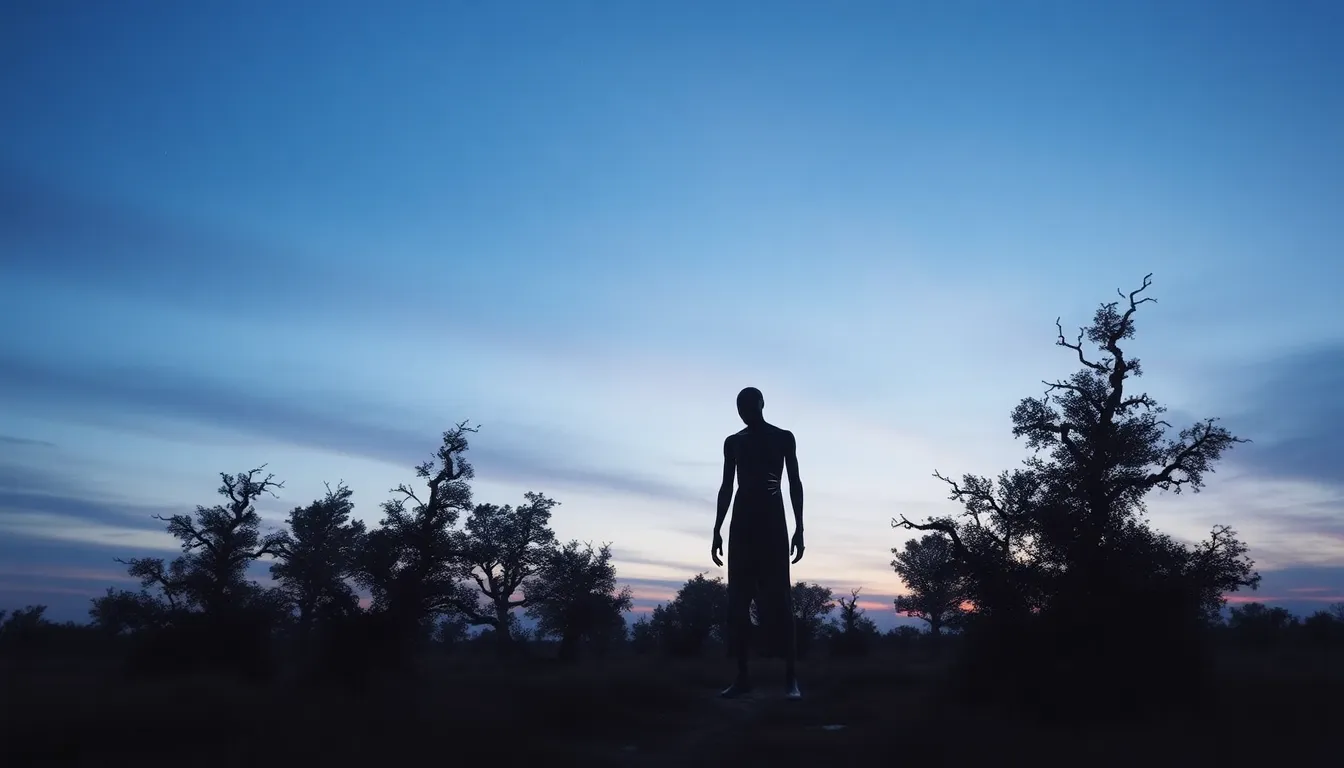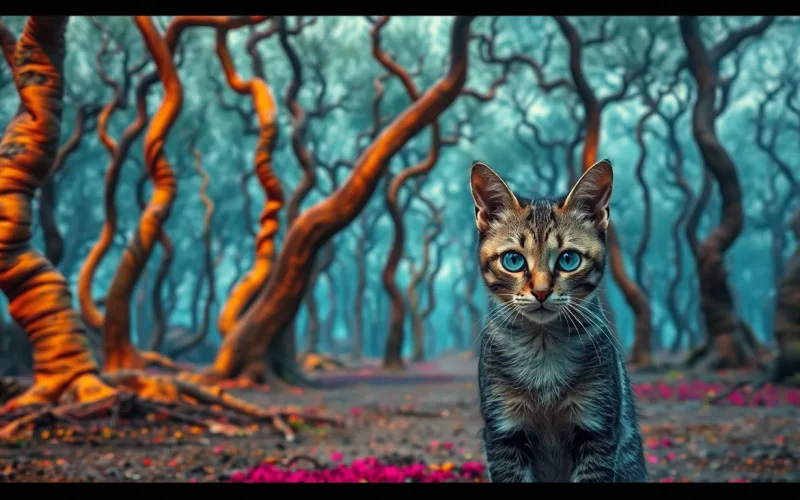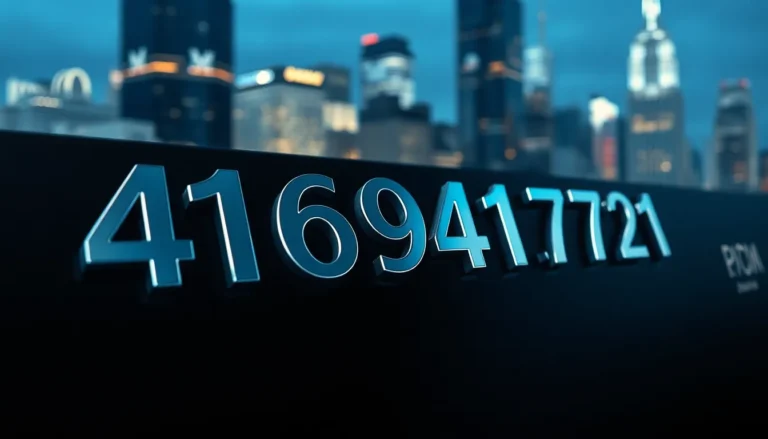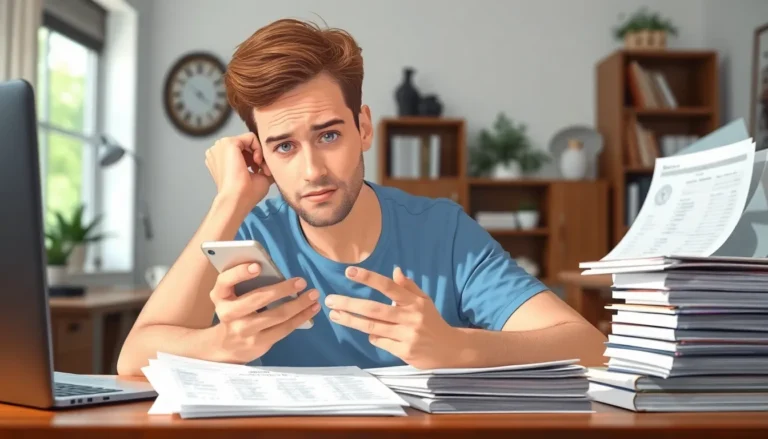Table of Contents
ToggleIn a world where technology pushes boundaries, AI-generated images have taken a bizarre turn into the realm of the creepy. Imagine scrolling through your feed and suddenly encountering a cat with human eyes or a landscape that looks like it came straight out of a fever dream. These uncanny creations spark curiosity and a hint of unease, leaving viewers both fascinated and slightly disturbed.
Overview of Creepy AI Generated Images
Creepy AI-generated images captivate audiences with their uncanny resemblance to reality, while simultaneously distorting it. Unusual features often appear, like animals possessing human characteristics or landscapes that defy logic. These images can evoke a range of emotions, from fascination to fear, as they challenge viewers’ assumptions about art and technology.
Examples frequently include distorted faces, surreal environments, and bizarre combinations, leading to a sense of disconnection. Artists and technologists explore the boundaries of creativity through AI, resulting in outputs that provoke questions about moral implications and the future of art. Additionally, viewers experience an unsettling tension when engaging with AI-generated content due to its uncanny valley effect.
Many online platforms showcase these unsettling images, drawing attention to the potential for both creativity and horror inherent in AI. Curated collections often feature hybrids, such as cats with human eyes or landscapes that blend reality and imagination. Audiences often share their reactions, sparking discussions centered around the nature of artificial intelligence and its implications for society.
Moreover, as technology advances, the accessibility and realism of AI-generated images continue to increase. This evolution raises concerns about authenticity, originality, and the boundaries of artistic expression. As these images circulate in various forums, they serve as a reminder of the fine line between innovation and the eerie, challenging perceptions of reality in profound ways.
Techniques Behind AI Image Generation

AI image generation utilizes various advanced methods to create intriguing and often eerie visuals. Among these methods, machine learning algorithms play a crucial role in shaping the output of generated images.
Machine Learning Algorithms
Machine learning algorithms process vast datasets to learn patterns and generate new images. They analyze thousands of images to identify key features and styles. Techniques like generative adversarial networks (GANs) enable creators to produce distinct outputs by pitting two neural networks against each other. These networks, a generator and a discriminator, enhance the quality of synthesized images through iterative feedback. This cycle culminates in visuals that can imitate reality yet contain elements that challenge perception, resulting in the unsettling quality often associated with AI-generated art.
Neural Networks and Deep Learning
Neural networks form the backbone of many AI innovations, particularly in image generation. Complex architectures, including convolutional neural networks (CNNs), focus on hierarchical feature extraction from input images. These networks excel at recognizing patterns in intricate details, which enhances the realism of generated images. Deep learning extends this concept with multi-layered networks that capture more abstract features. By leveraging vast amounts of data, deep learning models produce images that can invoke uncanny feelings, bridging the gap between lifelike representations and bizarre distortions that often leave viewers feeling uneasy.
Popular Instances of Creepy AI Generated Images
Many instances of creepy AI-generated images capture public attention, particularly in art and social media. These unique creations often evoke a blend of curiosity and discomfort, making them unforgettable.
Art and Entertainment
Art and entertainment sectors frequently utilize AI-generated images to push creative boundaries. Various artists experiment with unsettling visuals that incorporate distorted human faces or surreal beings. Works showcased in galleries spark conversations about the intersection of technology and creativity. Films and video games explore AI-generated characters that challenge the traditional notions of realism. Audiences engage with these pieces, fascinated by the eerie familiarity and the uncanny appeal they exude. Some creators deliberately use distortion techniques to amplify emotional responses, heightening the impact of their narratives. Remarkably, this creative approach invites viewers to question what constitutes art in a digital age defined by artificial intelligence.
Social Media Trends
Social media serves as a platform for sharing and showcasing creepy AI-generated images. Users circulate these images widely, fueling viral trends that catch public interest. Platforms like Twitter and Instagram often host collections that highlight unsettling visuals, causing discussions around their uncanny nature. Hashtags dedicated to AI art gain traction, attracting enthusiasts eager to explore this unsettling realm. Memes that feature AI-generated distortions circulate quickly, engaging users with their offbeat humor. Influencers contribute to the conversation by sharing their own experiences and subjective interpretations of these images. This phenomenon illustrates how social media amplifies the reach of AI-generated art, bridging the gap between technology and audience engagement.
Psychological Impact of Creepy AI Images
Creepy AI-generated images evoke strong psychological reactions, primarily fear and discomfort. These visuals disrupt familiar perceptions, challenging viewers’ senses and triggering unsettling emotions.
Fear and Discomfort
Fear emerges as a dominant response to creepy AI images. Distorted faces and surreal landscapes create a sense of the uncanny, provoking anxiety. Audiences often struggle to reconcile the familiar with the bizarre, resulting in feelings of unease. Discomfort increases when viewers confront images that blur the boundaries of reality. Experiencing uncanny representations of familiar subjects contributes to a sense of vulnerability. Familiarity mixed with distortion leads to tension, as viewers question the integrity of their surroundings. Unnerving representations incite a mix of fascination and dread, compelling individuals to confront their own discomfort with the unknown.
Societal Implications
Creepy AI images hold significant societal implications that affect cultural perceptions of technology. These unsettling visuals challenge established norms regarding art and representation. Debate emerges over the authenticity and originality of AI-generated creations. Concerns grow about the potential influence on artistic expression, provoking discussions surrounding intellectual property. Misinformation can spread rapidly through these images, leading to ethical dilemmas about their usage. Social media exacerbates these issues; viral posts featuring disturbing imagery can provoke mass reactions. As technology evolves, the implications of AI-generated content become increasingly complex, inviting scrutiny of its role in shaping society.
Addressing Concerns About AI Generated Imagery
Concerns about AI-generated imagery stem from ethical dilemmas and the future of artistic expression.
Ethical Considerations
Ethics play a pivotal role in the discourse surrounding AI-generated images. Questions about authenticity arise, especially when an image blurs the line between human and machine creativity. Misrepresentation poses another critical issue; content creators must prioritize transparency when sharing AI art to avoid misleading viewers. Additionally, the potential for misinformation amplifies the need for ethical guidelines within the field. Intellectual property rights also require careful consideration, as AI may produce works that resemble existing pieces without proper credit. Engaging in these discussions fosters responsible use of AI technologies, encouraging respect for original artistry and creators’ rights.
Future of AI in Art
The future of AI in art appears both promising and challenging. Innovations in machine learning continue to enhance the capabilities of AI, allowing for more sophisticated image generation. As technology advances, artists might collaborate with AI to create unique works, merging human intuition with machine precision. This collaboration can redefine artistic boundaries while sparking debates about artistic ownership. Institutions and galleries are increasingly incorporating AI-generated art into their collections, highlighting its growing acceptance. Continuous dialogue within the artistic community is essential to navigate the evolving landscape, ensuring that both technology and creativity advance in a balanced manner.
Creepy AI-generated images embody a fascinating yet unsettling intersection of technology and creativity. They challenge viewers’ perceptions and evoke strong emotional responses through their uncanny resemblance to reality. As artists and technologists explore this digital frontier, the implications for authenticity and originality become increasingly significant.
The dialogue surrounding these images continues to grow, highlighting the need for ethical considerations in their creation and dissemination. As AI technology advances, it will be crucial to navigate the balance between innovation and the discomfort these visuals can provoke. Ultimately, the journey into the world of AI-generated art promises to redefine boundaries while sparking critical conversations about the future of artistic expression.





